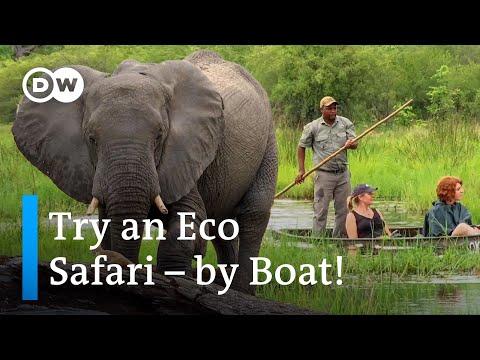
Deep in the heart of Botswana, the Okavango Delta offers an immersive experience into one of Africa’s most wildlife-rich sanctuaries. This vast and verdant oasis in the Kalahari Desert is best explored through one of its most traditional and serene methods—aboard a mokoro, a traditional dug-out canoe that has been used by native communities for centuries.
#### The Journey Begins
A trip on a mokoro plunges you into the sounds, sights, and soul of the Okavango Delta. As you glide silently across mirror-like waterways, you’ll be at eye-level with an ecosystem that throbs with life. Your guide, often a local Bayei or Hambukushu villager who has mastered these channels over their lifetime, uses a long pole called a “ngashi” to propel and steer the canoe through dense reeds and clear channels.
#### The Mokoro Experience
Crafted traditionally from tree trunks – nowadays often replaced with eco-friendlier fiberglass to conserve trees – mokoros are incredibly stable and maneuverable. This makes them perfect for close-up wildlife encounters. As you skim over lily-covered waters, it’s not uncommon to spot herds of lechwe splashing through shallow pools or elephants bathing along muddy banks.
The real magic lies in the quieter moments: a sudden fish eagle’s cry overhead, or the mysterious glimpse of a hippos’ eyes just above water level. From your unique vantage point in your mokoro, these experiences feel all the more intimate.
#### Wildlife Wonders
The Okavango Delta is home to an extraordinary array of animals which include not only elephants and hippos but also crocodiles, lions, cheetahs, and hundreds of species of birds. Depending on water levels—which fluctuate throughout the year due to rainfall patterns—you might drift past prowling lions or watch giraffes gracefully necking acacia leaves.
Guided tours also often include stops at islands scattered throughout the delta where you can stretch your legs with guided walks. These excursions offer chances to encounter wildlife on foot—an exhilarating complement to your time on water.
#### Cultural Insights
A journey on a mokoro also allows for cultural exchange. Guides usually share stories about their tribes’ traditions, their relationship with nature, and how they have navigated life in such a dynamic environment. This enriches every trip with personal narratives that resonate deeply with visitors looking for meaningful travel experiences.
#### Sustainable Tourism
Choosing to explore by mokoro is more than just an exciting adventure; it’s also an environmentally sound decision. These boats have minimal impact on delicate ecosystems compared to motorized vehicles or larger boats. Furthermore, engaging local guides promotes community-based tourism which supports local economies without compromising environmental integrity.
#### How To Plan Your Mokoro Adventure
When planning your trip to the Okavango Delta:
– **Choose responsible tour operators** who work directly with local communities.
– **Consider timing**; water levels are highest between June and August following seasonal floods.
– **Prepare appropriately**; bring binoculars for bird watching, wear sun protection for open skies exposure and pack lightly as space is limited in these slender boats.
– **Stay flexible**; weather conditions can change itineraries so adopting an adventurous spirit is key.
### Concluding Remarks
A ride through Botswana’s Okavango Delta aboard a traditional mokoro offers more than just wildlife viewing—it’s an immersive exploration that bridges cultures and conserves ecosystems. As you quietly float through this aquatic wonderland guided by centuries-old wisdom carried through generations via stories and skills passed down by native communities, each ripple tells tales from ancient times up until today making every moment aboard truly magical.
